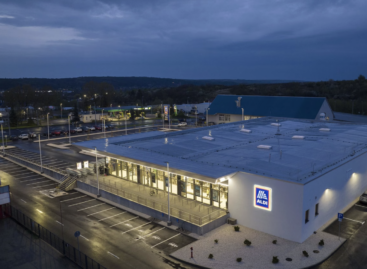Pink pepper day is organized in Röszke
Visitors can also learn about the traditions of growing and processing hot peppers on Saturday’s Rose Pepper Day in Röszke, which is organized in memory of the first paprika brand in Szeged, born 150 years ago – the organizer Péter Beretzk Nature Conservation and Cultural Heritage Conservation Club informed MTI.

(Photo: Pixabay)
In the Southern Great Plains, the Franciscan monks were certainly the first to plant paprika in this region, first as an ornamental plant, and later for medicinal purposes. Paprika brandy was used externally to treat insect bites, and when consumed, it was excellent for curing “three-day colds” and malaria. Peppers, which arrived from across the sea via the Balkans, began to be grown in larger areas in the Carpathian basin in the second half of the 18th century, and appeared on farms around Szeged at the beginning of the 19th century, and later became one of the defining cultural crops of the region.
Two years ago, Röszke Rose Pepper Day was launched with the aim of creating tradition and building community, in memory of the first paprika brand in Szeged
The organizer of the event, Anita Molnár, described in her book A Szögedi Paprika that János Pálfy registered a patent in 1874 for “a pepper preparation grinding and refining machine that can be used to produce paprika products of the most beautiful color and the best quality”. The success was probably not only contributed by the machine, but also by the careful, manual splitting of the fruits, which made the grind less pungent. One of the observers compared the bright red color of the ground pepper to a blooming rose, hence the name: rose pepper, which was used as a brand name by the family. In the following years, Pálfy’s pink paprika was successfully presented at domestic and international exhibitions, and was even sent to Lajos Kossuth’s kitchen in Italy. In the 1890s, the Pálfy process and the name pink paprika were copied one after another by the new paprika processors: the patent expired, the processors in Alsóváros were free to use the process in their workshops. At the free event in the Röszke Paprika Museum – where visitors are also welcome with guided tours – you can try stringing and breaking peppers. Crafts activities are organized for the children, paprika dishes can be tasted, guests can walk along the Paprika educational trail, learn how to grow chili peppers at home, and can even take home seeds for growing seedlings next spring.
MTI
Related news
AM: Government helps farmers with a loan moratorium
🎧 Hallgasd a cikket: Lejátszás Szünet Folytatás Leállítás Nyelv: Auto…
Read more >More than 100 Hungarian farmers also demonstrated in Brussels
🎧 Hallgasd a cikket: Lejátszás Szünet Folytatás Leállítás Nyelv: Auto…
Read more >NAK: Domestic producers await customers with an ample supply of all pine species
🎧 Hallgasd a cikket: Lejátszás Szünet Folytatás Leállítás Nyelv: Auto…
Read more >Related news
How do young adults celebrate?
🎧 Hallgasd a cikket: Lejátszás Szünet Folytatás Leállítás Nyelv: Auto…
Read more >Vajda-Papír celebrates Ooops!’s 15th anniversary with a hybrid AI campaign
🎧 Hallgasd a cikket: Lejátszás Szünet Folytatás Leállítás Nyelv: Auto…
Read more >Pre-holiday shopping at up to half price
🎧 Hallgasd a cikket: Lejátszás Szünet Folytatás Leállítás Nyelv: Auto…
Read more >






